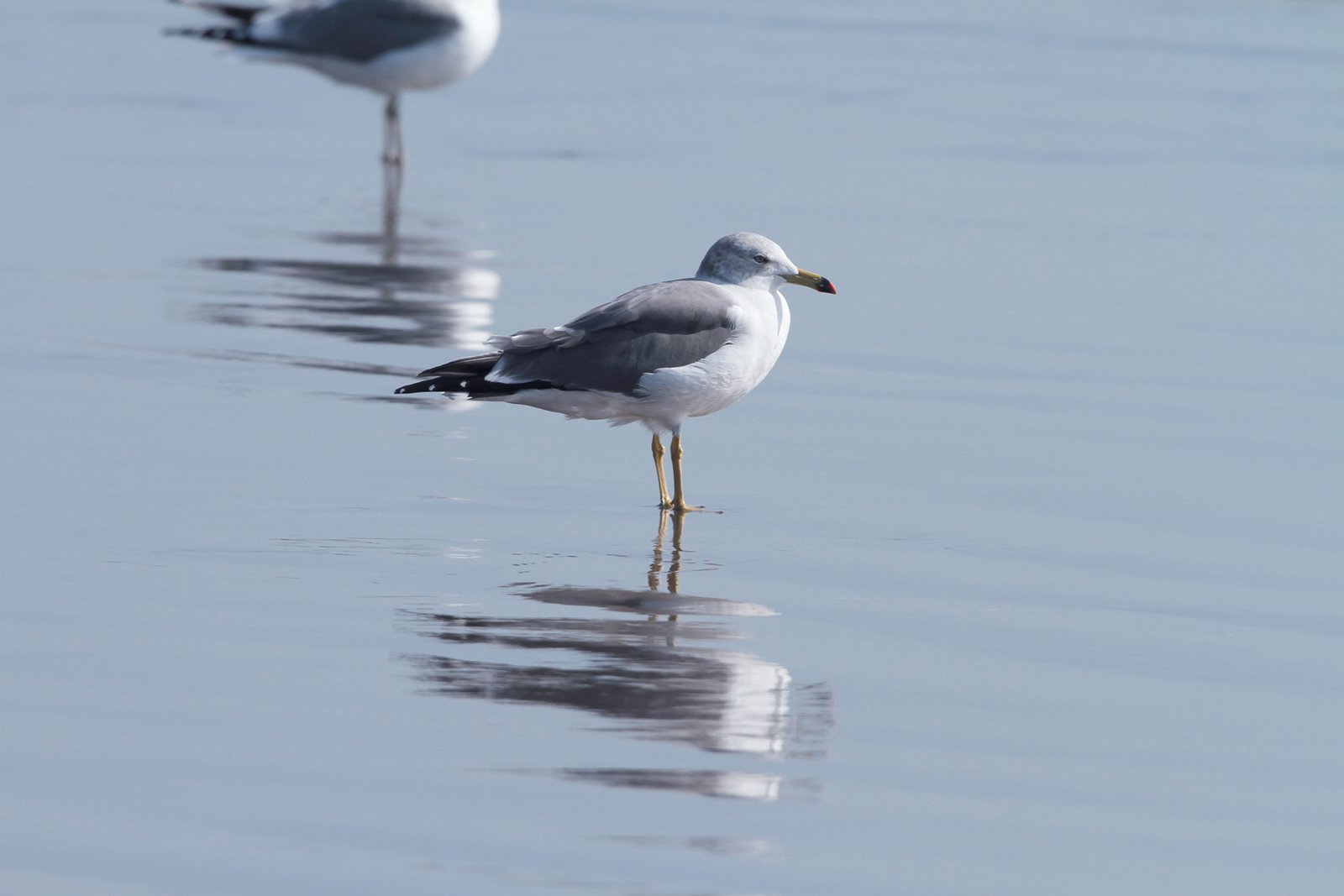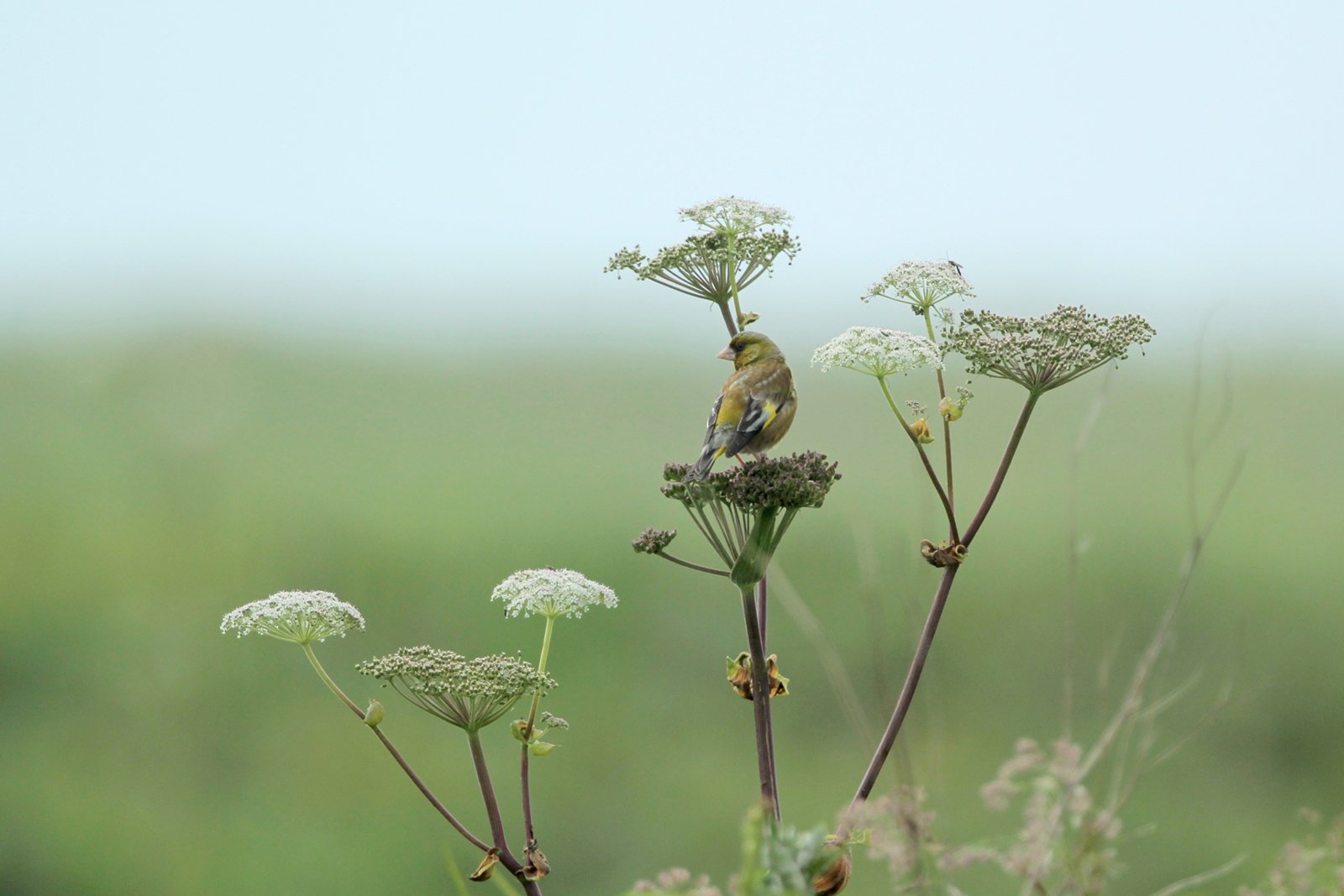
Seabirds
Precious Seabirds Protected and Nurtured by Cliffs
|
Yururi Island was designated as a natural monument of Hokkaido in 1963. Since then, it has been designated and selected for protection as a Hokkaido Natural Environment Conservation Area (1976), a national bird and animal sanctuary (1982), and “Important Wetlands 500 in Japan” selected by the Ministry of the Environment (2001). At present, landing on the island is restricted. A significant reason for the restriction is the presence of valuable seabirds. The impressive name “Yururi” originally means “island with cormorants” in the Ainu language. In other words, the island has long been known for its importance as a breeding ground for seabirds. Thus, the seabirds, the identity of Yururi Island, need to be protected in the future.
One of the most critical seabirds to be protected is the tufted puffin. The tufted puffin, which means “beautiful (pirka) bill (etu)” in Ainu, has a large orange bill. Its entire body is covered in black feathers. The face is pure white. The feet and bill are the same orange color. This seabird has an impressive contrast of vivid colors. Its distribution range is vast, from the United States, Canada to Russia, and Japan. If you look at it from a global perspective, the number of inhabitants is not small. However, when it comes to Japan, the drastic decline in its population is very alarming. According to the Ministry of the Environment’s Red List published in 2019, the tufted puffin has been classified as Critically Endangered (CR), following Extinct (EX) and Extinct in the Wild (EW), meaning that it is “Extremely high risk of extinction in the wild very shortly.” Currently, only a few mating pairs exist on Yururi Island and its sub-island Moyururi Island (Moyururi means “small Yururi”). According to a study by Hokkaido University, the tufted puffin population in Japan is estimated to have declined by 87% since 1980 as of 2015.
Along with the tufted puffin, the spectacled guillemot is also a symbol of the island of Yururi. The English name of this charming seabird includes the word “Spectacled.” As its English name suggests, it has white lenticular patterns only around its eyes on its pitch-black body. Its Japanese name means “red foot” in the Ainu language, kemahure. Indeed, the vivid colors of its feet stand out even when seen from a distance. Among birdwatchers visiting the Nemuro Peninsula, it is also widely known for its beautiful chirp, often called the “canary of the sea.” According to the aforementioned Red List, it is classified as Endangered II (VU), two levels lower than the tufted puffin. This means that “species in increasing danger of extinction.” This seabird is not in a secure situation.
The key to why Yururi Island is an ideal breeding ground for seabirds lies in its topography. These seabirds spend most of the year at sea, not on land, and nest only during the breeding season. They build their nests on steep cliffs where foreign enemies cannot get. Yes, steep cliffs are the most comfortable places for seabirds to protect their eggs from foreign enemies. Surrounded by sea cliffs that rise steeply from the sea surface, Yururi Island is Japan’s last utopia for seabirds.
The spectacled guillemot and tufted puffin are the only two seabirds with official Japanese names of Ainu origin. These two small seabirds were very close to the people living in the northern seaside. However, even these seabirds face threats to their existence as their living areas are being narrowed. The tufted puffin lays only one egg, and the spectacled guillemot lays two eggs at a time. Therefore, an egg has a much heavier value than its weight. When you think about its importance, it is understandable why people are restricted from entering the island.
archives
Yururi Birds
Photo: Arita Shigeo
As a Breeding Ground for Seabirds
National Wildlife Protection Area
Yururi Island and Moyururi Island were designated as a national bird and animal sanctuary in 1982 as a “collective breeding ground for seabirds.” On them, breeding of northern seabirds such as tufted puffin, Phalacrocorax urile, common guillemot, and murrelet, which are listed in the Red List of Critically Endangered (CR) by the Ministry of the Environment (2020), has been confirmed. And a total of 27 families and 47 species of birds have been confirmed as living there.
Natural Monument of Hokkaido
Yururi Island and Moyururi Island were designated as a Natural Monument of Hokkaido in 1963 as “Yururi Island and Moyururi Island: Breeding Ground for Seabirds.” Seven species of seabirds breed here: tufted puffin, spectacled guillemot, Phalacrocorax urile, Japanese cormorant, Cerorhinca monocerata, Larus schistisagus, and black-tailed gull. Both islands are said to be the last confirmed breeding sites of tufted puffin and Phalacrocorax urile in Japan.
Podiceps grisegena
Podicipediformes
Podicipedidae
Phalaropus lobatus
Charadriiformes
Phalaropodidae
Phalaropus lobatus
Charadriiformes
Phalaropodidae
Gavia stellata
Gaviiformes
Gaviidae
Phoebastria albatrus
Procellariiformes
Diomedeidae
Endangered II (VU)
Apus pacificus
Apodiformes
Apodidae
Cerorhinca monocerata
Charadriiformes
Alcidae
Cerorhinca monocerata
Charadriiformes
Alcidae
Phalacrocorax capillatus
Pelecaniformes
Phalacrocoracidae
Uria aalge
Charadriiformes
Alcidae
Critically Endangered IA (CR)
Synthliboramphus antiquus
Charadriiformes
Alcidae
Critically Endangered IA (CR)
Larus crassirostris
Charadriiformes
Laridae
Cepphus columba
Charadriiformes
Alcidae
Fratercula cirrhata
Charadriiformes
Alcidae
Critically Endangered IA (CR)
Fratercula cirrhata
Charadriiformes
Alcidae
Critically Endangered IA (CR)
Fratercula cirrhata
Charadriiformes
Alcidae
Critically Endangered IA (CR)
Aethia cristatella
Charadriiformes
Alcidae
Aethia cristatella
Charadriiformes
Alcidae
Gallinago hardwickii
Charadriiformes
Scolopacidae
Near Threatened (NT)
Emberiza schoeniclus
Passeriformes
Emberizidae
Larus schistisagus
Charadriiformes
Laridae
Near Threatened (NT)
Cygnus cygnus
Anseriformes
Anatidae
Gavia arctica
Gaviiformes
Gaviidae
Haliaeetus pelagicus
Accipitriformes
Accipitridae
Endangered II (VU)
Haliaeetus albicilla
Accipitriformes
Accipitridae
Endangered II (VU)
Larus canus
Charadriiformes
Laridae
Chloris sinica
Passeriformes
Fringillidae
Synthliboramphus wumizusume
Charadriiformes
Alcidae
Endangered II (VU)
Arenaria interpres
Charadriiformes
Scolopacidae
Diomedea nigripes
Procellariiformes
Diomedeidae
Melanitta nigra
Anseriformes
Anatidae
Cepphus carbo
Charadriiformes
Alcidae
Endangered II (VU)
Cepphus carbo
Charadriiformes
Alcidae
Endangered II (VU)
Diomedea immutabilis
Procellariiformes
Diomedeidae
Endangered IB (EN)
Aethia pusilla
Charadriiformes
Alcidae
Clangula hyemalis
Anseriformes
Anatidae
Acrocephalus bistrigiceps
Passeriformes
Acrocephalidae
Histrionicus histrionicus
Anseriformes
Anatidae
Locustella ochotensis
Passeriformes
Locustellidae
Gavia pacifica
Gaviiformes
Gaviidae
Larus hyperboreus
Charadriiformes
Laridae
Phalacrocorax urile
Pelecaniformes
Phalacrocoracidae
Critically Endangered IA (CR)
Fratercula corniculata
Charadriiformes
Alcidae
Calliope calliope
Passeriformes
Muscicapidae
Phalaropus fulicarius
Charadriiformes
Phalaropodidae
Puffinus griseus
Procellariiformes
Procellariidae
Motacilla alba lugens
Passeriformes
Motacillidae
Uria lomvia
Charadriiformes
Alcidae
Puffinus tenuirostris
Procellariiformes
Procellariidae
Puffinus tenuirostris
Procellariiformes
Procellariidae
Falco peregrinus
Falconiformes
Falconidae
Endangered II (VU)
Phalacrocorax pelagicus
Pelecaniformes
Phalacrocoracidae
Endangered IB (EN)
Phalacrocorax pelagicus
Pelecaniformes
Phalacrocoracidae
Endangered IB (EN)
Melanitta fusca
Anseriformes
Anatidae
Fulmarus glacialis
Procellariiformes
Procellariidae
Uragus sibiricus
Passeriformes
Fringillidae
Bucephala clangula
Anseriformes
Anatidae
Podiceps auritus
Podicipediformes
Podicipedidae
Anas falcata
Anseriformes
Anatidae
Larus glaucescens
Charadriiformes
Laridae
Corvus corax
Passeriformes
Corvidae
Extra edition
Phoca vitulina
Carnivora
Phocidae
Near Threatened (NT)
Extra edition
Phoca vitulina
Carnivora
Phocidae
Near Threatened (NT)
Extra edition
Enhydra lutris
Carnivora
Mustelidae
Critically Endangered IA (CR)
Extra edition
Enhydra lutris
Carnivora
Mustelidae
Critically Endangered IA (CR)
Extra edition
Lagenorhynchus obliquidens
Cetartiodactyla
Delphinidae
Extra edition
Mola mola
Tetraodontiformes
Molidae
Ministry of the Environment Red List Category
Extinct (EX) = Species considered to be already extinct in Japan.
Extinct in the wild (EW) = Species that survive only in captivity, under cultivation, or in the wild outside of their natural distribution range.
Critically Endangered I (CR+EN) = Species on the verge of extinction.
Critically Endangered IA (CR) = Extremely high risk of extinction in the wild very shortly.
Endangered IB (EN) = Not as endangered as IA, but at high risk of extinction in the wild shortly.
Endangered II (VU) = Species in increasing danger of extinction.
Near Threatened (NT) = Species currently at low risk of extinction, but may become “endangered” depending on changes in habitat conditions.
*Classification as of 2020



































































